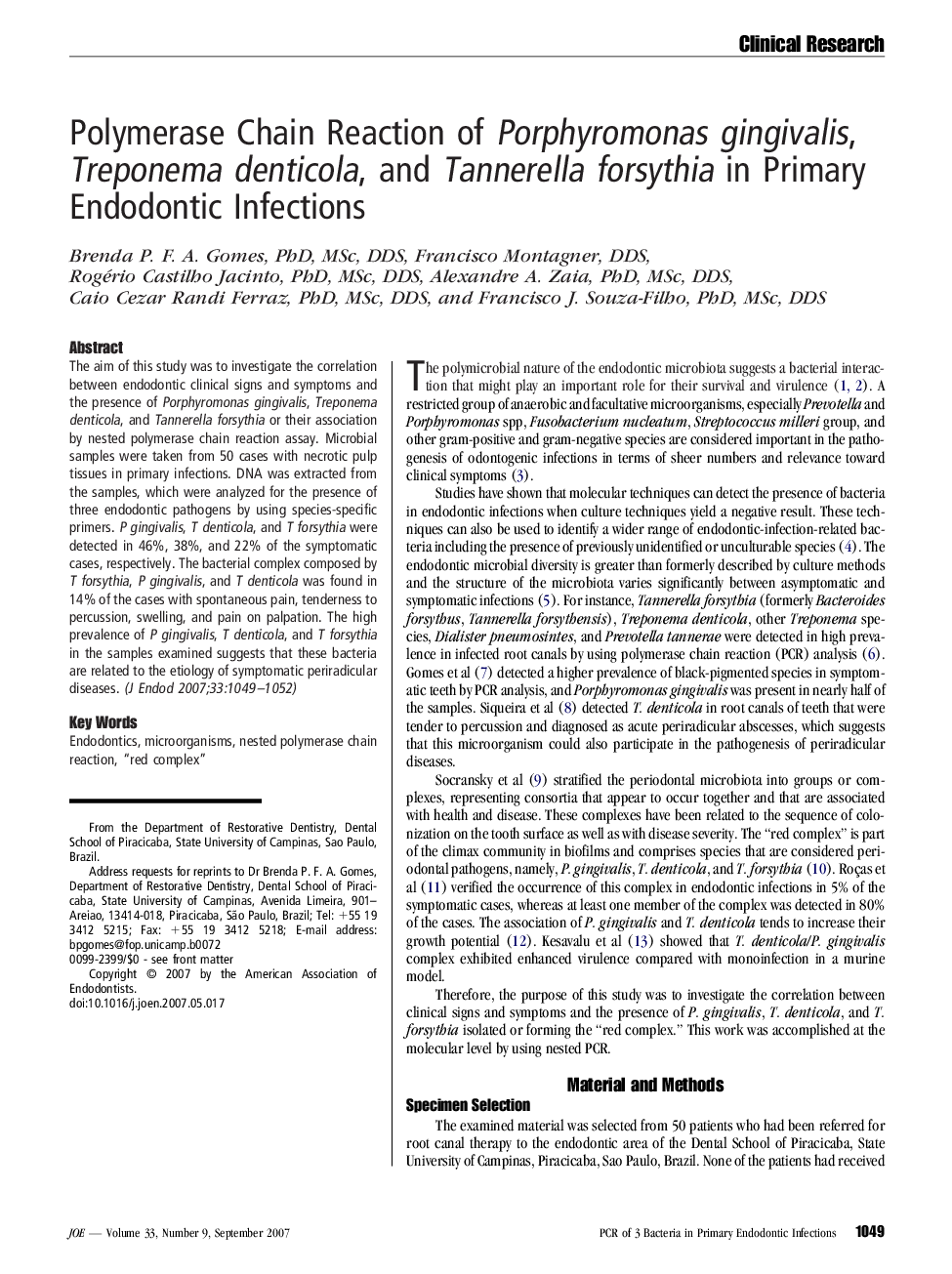| Article ID | Journal | Published Year | Pages | File Type |
|---|---|---|---|---|
| 3150840 | Journal of Endodontics | 2007 | 4 Pages |
Abstract
The aim of this study was to investigate the correlation between endodontic clinical signs and symptoms and the presence of Porphyromonas gingivalis, Treponema denticola, and Tannerella forsythia or their association by nested polymerase chain reaction assay. Microbial samples were taken from 50 cases with necrotic pulp tissues in primary infections. DNA was extracted from the samples, which were analyzed for the presence of three endodontic pathogens by using species-specific primers. P gingivalis, T denticola, and T forsythia were detected in 46%, 38%, and 22% of the symptomatic cases, respectively. The bacterial complex composed by T forsythia, P gingivalis, and T denticola was found in 14% of the cases with spontaneous pain, tenderness to percussion, swelling, and pain on palpation. The high prevalence of P gingivalis, T denticola, and T forsythia in the samples examined suggests that these bacteria are related to the etiology of symptomatic periradicular diseases.
Related Topics
Health Sciences
Medicine and Dentistry
Dentistry, Oral Surgery and Medicine
Authors
Brenda P.F.A. PhD, MSc, DDS, Francisco DDS, Rogério Castilho PhD, MSc, DDS, Alexandre A. PhD, MSc, DDS, Caio Cezar Randi PhD, MSc, DDS, Francisco J. PhD, MSc, DDS,
